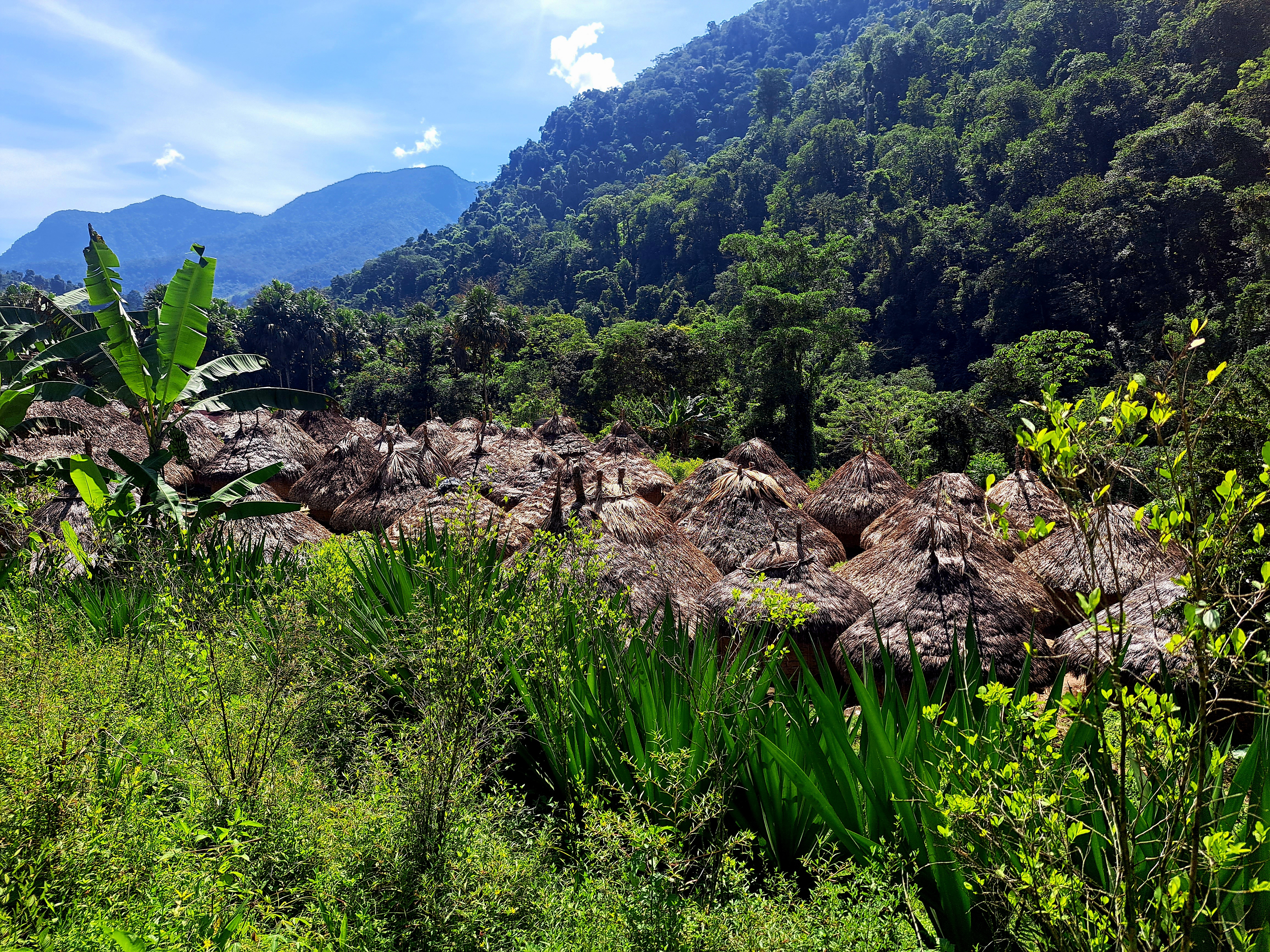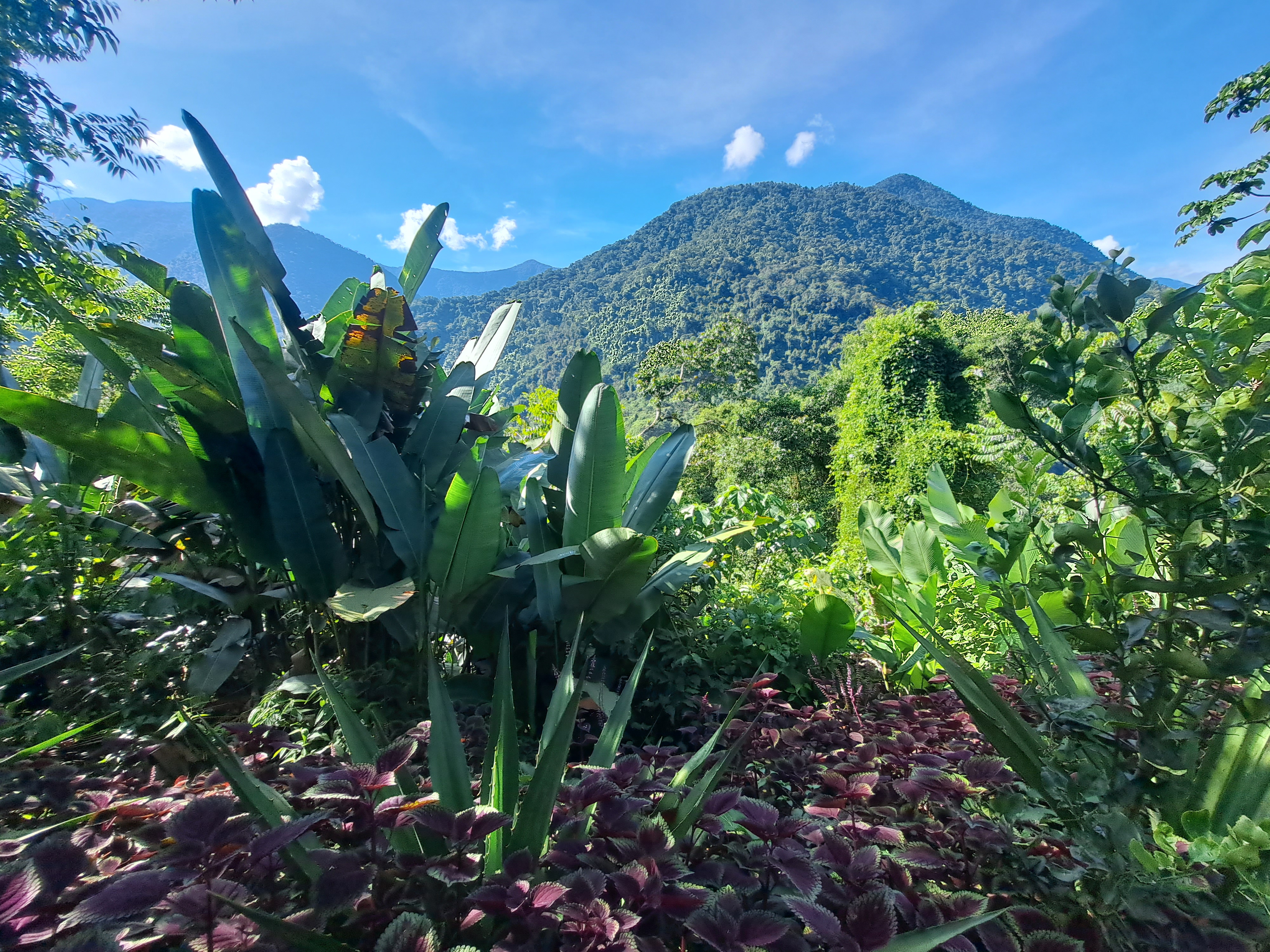
Last week, TriplePundit profiled the backstory of Colombia’s “Lost City,” Ciudad Perdida, an archeological site that’s important culturally and spiritally to local Indigenous communities. Dating back to 800 CD (AD), Ciudad Perdida predates world-reknowned Machu Picchu by more than 600 years. Today, the 80-acre site that is part of a national park is difficult to visit, and that’s by design. Ciudad Perdida’s remoteness and its serene grounds, when compared to easy access of its counterpart in Perú, have led some to call it the “Anti-Machu Picchu.”
The archeological wonders and setting within the lush green jungles that cover Colombia’s Sierra Nevada de Santa Marta mountains make Ciudad Perdida well worthy of a visit. But the 1,200-year-old site also stands out as it offers a compelling case study of what occurs when local Indigenous communities are finally allowed to manage their ancestral lands without any outside interference.
For the Indigenous people who live in the area surrounding Ciudad Perdida — the Arhuaco (or Ijka), Kankuamo, Kogi and Wiwa — tourism's results have been promising, with schools and infrastructure improvements among the successes. Though, as with any case when a large influx of money starts to roll in, there are some pitfalls as well.

Management of Ciudad Perdida is by and for local communities
Though several tour operators can book trips to Ciudad Perdida, they are limited as to what kind of itineraries they can offer and how long visitors can take to complete the 17-mile (as far as the crow flies) hike into the ancient site. Stays are limited to three or four nights, and the price is the same for everyone: Last month, the price was 1.4 million Colombian pesos (just under $300). Visitors are divided into groups of 10 to 12 people, with few exceptions.
Do the math, and one can see how the revenues can quickly add up. But it’s not only about money being funneled into a local bank account: Everyone who works across the operations that keep the trails to Ciudad Perdida busy are Indigenous people from the area or, as often the case with a trekking group’s translator, they are from Santa Marta or nearby towns. In addition to the guides, locals also work as cooks, 4x4 or motorcycle drivers, mule drivers, porters or clerks at the kiosks alongside the trails. The work may not be as remunerative as it was when other commodities were the backbone (and bane) of the local economy in decades past. Nevertheless, based on the number of gringos traipsing to and from Ciudad Perdida, clearly guiding and supplying visitors has created steady work.
Investing in local communities
For someone who is hiking toward Ciudad Perdida during the rainy season — as was 3p’s timing when we visited last month — the muddy trails and surroundings will lead to an assumption that investments aren’t unfolding within local communities too quickly. But such thinking overlooks the town growing out of El Mamey, the local community where surface roads from northern Colombia’s National Route 90 end; in addition, the town serves as the trailhead where the hike to the archeological site begins. Judging by all the 4x4s, motorcycles, storefronts and occasional wireless internet, visitors’ money is being put to use.
Further, while organizations and NGOs such as the Global Heritage Fund offer support and can advise as to what kinds of improvements could be made in the region, in the end how the money is spent is up to the local communities.
For now, the focus is on building schools. Trekkers making their way to Ciudad Perdida will pass one community school, at which students not only learn a standard education curriculum, but are also taught about their history and heritage. Another school far removed from the sites trails is for young men who are believed to have potential as serving as a mamo, the spiritual leader who is tasked with overseeing and protecting Ciudad Perdida.
Future challenges: Building wealth, ensuring social impact and mitigating environmental risk
Certainly, future investments could thrive across the communities surrounding Ciudad Perdida. For example, plastic trash exacts its own tolls on the local environment. Just as all supplies have to be hauled into the area by mules, the same goes for anything that needs to be removed — and that includes plastic bottles. Though the fee to trek into Ciudad Perdida includes “rehydration,” the reality is that sometimes the water filters at the park’s base camps didn’t work: The need to hydrate constantly, even during the rainy season, left visitors little choice but to purchase bottled water or other drinks. Though it was apparent that the mules departing Ciudad Perdida were carrying sacks almost as large as the ones entering, not all trash makes it out; a fair share of plastic bottles could be seen strewn on the sides of the trails. An investment in a closed-loop recycling system would be a branding dream for any clean tech startup, but that will not occur unless locals give the green light.
The same goes for any systems that could help minimize all environmental impacts on Ciudad Perdida. Microgrids that could keep the base camps’ lights on at night, or water filtration systems that could decrease demand for bottled water, would also show promise. Sustainable farming practices could also thrive in the mountains and hills surrounding Ciudad Perdida. But for now, such ideas come up against centuries of mistrust and disruptions that for too long got in the way of these local communities’ ability to carry on, live their lives and mind their own business without any outsiders’ meddling in their affairs.

Today, the rush of visitors to Ciudad Perdida keeps generating economic opportunities, which for the most part have proven to be both steady and sustainable. But one point about which our guides constantly reminded us was one result of the region’s tourism boom: drinking, and day drinking, are now a common pastime. As one of our guides told us, “You’ll see these guys day drinking daily, and that’s what happens when there’s always money around.”
Of course, the Indigenous in Colombia are hardly the first people to treat themselves when economic times are good: Just look at what occurred in San Francisco during the Gold Rush era or today in the Permian basin, and both of those examples illustrate debauchery in comparison to what is going on now in Colombia’s Sierra Nevadas.
Bottom line: The results for now show that having control over who visits Ciudad Perdida has been a net positive for local communities. Beyond the feeling of empowerment and economic benefits, locals are allowed to continue their traditions while sharing them with their visitors; sustainable development is the norm instead of chaotic boom-and-bust cycles; and opportunities in education that were nonexistent at the turn of this century are increasing.
Meanwhile, other Indigenous peoples in Colombia are feeling empowered and are telling the powers-that-be to shove it. For example, earlier this year, the Indigenous-owned company behind a brand of beer, Coca Pola, received threats of legal action from Coca-Cola over trademark infringement. Representatives of two Indigenous groups, the Nasa and Embera, who both live where the Coca Pola beer is made in western Colombia, clapped back and told the soft drink giant that in return they would ban sales of Coca-Cola products within their territories.
Image credits via Leon Kaye

Leon Kaye has written for 3p since 2010 and become executive editor in 2018. His previous work includes writing for the Guardian as well as other online and print publications. In addition, he's worked in sales executive roles within technology and financial research companies, as well as for a public relations firm, for which he consulted with one of the globe’s leading sustainability initiatives. Currently living in Central California, he’s traveled to 70-plus countries and has lived and worked in South Korea, the United Arab Emirates and Uruguay.
Leon’s an alum of Fresno State, the University of Maryland, Baltimore County and the University of Southern California's Marshall Business School. He enjoys traveling abroad as well as exploring California’s Central Coast and the Sierra Nevadas.














